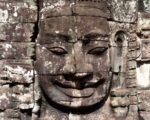In the labyrinth of missing persons cases, the National Missing and Unidentified Persons System (NAMUS) stands as a beacon of hope. As officials urge for its increased utilization, NAMUS could be the key to unlocking the answers that thousands of families are desperately seeking.
A National Resource Underused
NAMUS, a comprehensive database for missing, unidentified, and unclaimed persons, is a tool with untapped potential. Despite its capabilities, law enforcement and medical examiners across the nation have yet to fully embrace this resource. The database’s power lies in its ability to cross-reference cases nationwide, offering a glimmer of hope in what can often be a grim search.
The system’s forensic services, including DNA analysis and fingerprint comparison, are pivotal in piecing together the puzzles of these cases. Yet, the gap between available resources and their application in investigations remains wide. Officials are now calling for a concerted effort to bridge this gap, advocating for the integration of NAMUS into standard investigative procedures.

The Human Element
Behind every entry in the NAMUS database is a person—a story, a family, a life interrupted. The system is more than just a repository of data; it’s a lifeline for those left in the wake of a loved one’s disappearance. The emotional toll of a missing person case is immeasurable, and the importance of resolving these cases extends far beyond the procedural; it’s a matter of human closure and justice.
Families and advocates play a crucial role in this process, often being the ones to initiate entries into the database. Their involvement is a testament to the collaborative nature of NAMUS, which empowers individuals to take an active role in the search for their missing relatives.
The Path Forward
The call to action is clear: NAMUS should be used more, and its full potential realized. Training, awareness campaigns, and policy changes are needed to ensure that this valuable tool is not just available but actively employed in the pursuit of resolution for missing persons cases.
As the database continues to evolve, with technological advancements and expanding services, the hope is that its use will become a standard practice, closing the gap between the missing and their return home or the peace of finality for their families.













